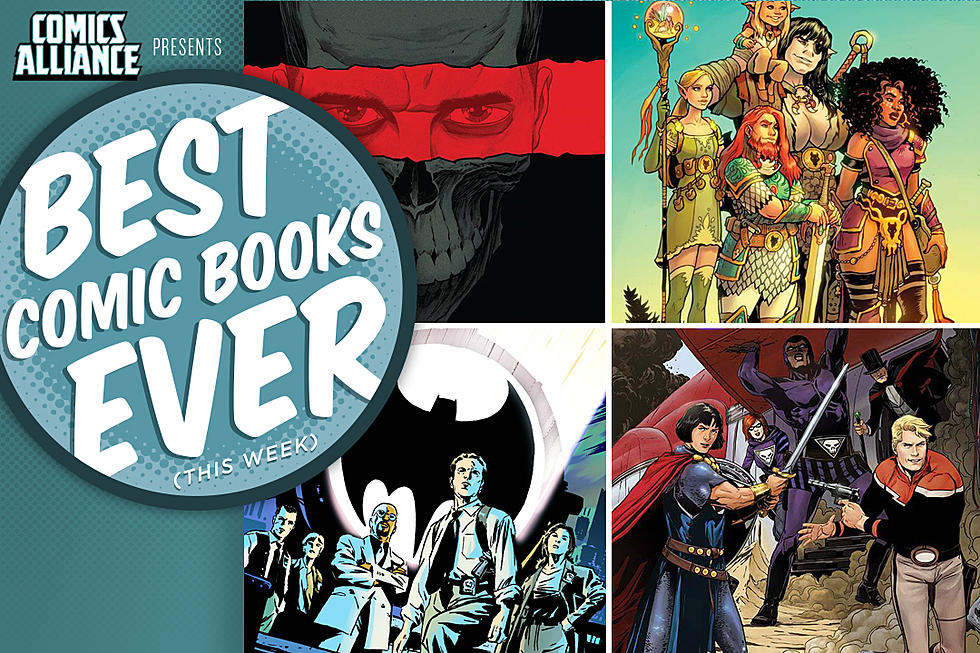
Eerie: Celebrating The Bizarre & Beautiful Work Of Charles Burns
Charles Burns excels at making people feel uncomfortable. Born September 27, 1955, Burns has been making incredible comics since his debut in the early 1980s. Simultaneously, he's cultivated a career as one of the most coveted and respected illustrators in the magazine industry. Today we celebrate one of the most unique voices in comics.
Raised by art-loving parents and a father who read comics, Charles Burns absorbed a medley of influences on his way to adulthood. Mad Magazine, EC Comics, horror movies, Pop Art, and underground comix were all formative; at college (where his classmates included Lynda Barry and Matt Groening, oddly enough) he developed an interest in photography and ukiyo-ye, the Japanese art of woodcut printing.
In varying degrees, all of these influences are apparent in Burns's work, but he's synthesized his inspirations into his comics in ways that seem to owe nothing to any particular school. With crisp, striking illustrations inked entirely with a finely-controlled brush, even his first black-and-white comics seem to come from a voice that's fully-formed and never fumbling around to express his idiosyncratic vision.
By the early 1980s, Burns had illustrated for Sub Pop (the zine that preceded the record label) and submitted a piece for a Denis Kitchen anthology, but when his work appeared in Art Spiegelman and Francoise Mouly's RAW, he quickly developed a healthy amount of buzz in the world of independent and art comics. With odd characters like El Borbah, Big Baby, and Dog Boy, Burns exploited comicbook and pop culture stereotypes and idioms to explore alienation, anxiety, and psychological horror.
Throughout the decade Burns was all over the place. He contributed comics and covers to many notable anthologies, including RAW and the Curse of the Molemen one-shot, Blab, Dope Comix, Weirdo, Taboo, Heavy Metal, and many more. He published several stories throughout Europe during his time with the Valvoline artists' collective, a group that included Igort and Lorenzo Mattotti. He maintained a syndicated strip that ran through several alt-weeklies when he returned to the States while he built up his career as an illustrator.
But Burns's biggest success began in 1995 with the first issue of Black Hole. Expanding on an idea introduced in the Big Baby story "Teen Plague," Black Hole centers on a group of suburban teenagers in the 1970s who contract a sexually-transmitted disease that brings about physical mutation. As it spreads throughout the town and transforms its carriers, teenaged victims are ostracized and alienated, and the torture associated with their horrifying sexual awakenings has the potential to change them into something much worse than freaks.
A genuine magnum opus that took Burns over a decade to complete, Black Hole is evocative, eerie and almost frighteningly familiar. The horror element and the apparent symbolism of "the Bug" string Black Hole with an uneasy tension that can almost be too much to take at times, but where the book really triumphs is its universality. Burns's understanding of teenage relationships, the fear of adulthood, and the agony of the internal and uncontrollable imbues Black Hole with an awful, dreamlike anxiety.
After finishing Black Hole in 2005, Burns focused primarily on his illustration work for a few years, including a long series of portraits as the house artist for The Believer. He returned to comics in 2010 with X'ed Out, the first part of a trilogy with The Hive and Sugar Skull, collected by Pantheon as Last Look.
Burns's first full-color long-form project, the trilogy once again displayed his unique skills for craftsmanship, symbolism, and mood, as he combined non-linear narrative, dream states and pastiche into a haunting expression of trauma, guilt, denial and regret.
Over his long career, Burns has shocked and appalled, flummoxed and confused, stunned and captivated. He is truly one of kind, and nearly everything he creates --- from Big Baby and El Borbah to Black Hole and Sugar Skull --- is challenging, unnerving, and explicitly, inescapably beautiful.
More From ComicsAlliance



![Running the Gauntlet in Mark Beyer’s Cruelly Funny ‘Agony’ [Review]](http://townsquare.media/site/622/files/2016/02/agony5.jpg?w=980&q=75)

![I Want To Make This A Performance: Grant Morrison Discusses His Plans For ‘Heavy Metal’ [Interview]](http://townsquare.media/site/622/files/2015/08/CA_MorrisonMetal.jpg?w=980&q=75)



